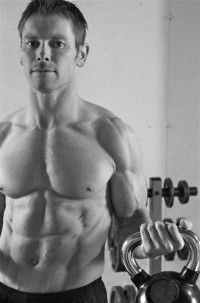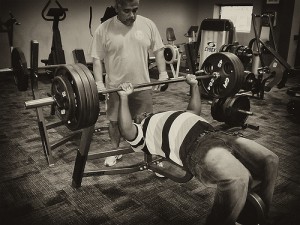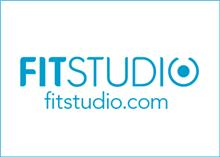My Chest Specialization Program
April 2, 2012 by danny · Leave a Comment
When you focus on bringing up a body part (or two), you’re dealing with a different animal. If you try to keep the same volume/intensity for the rest of your body, it’s just not going to work – something has to give! While on a specialization program, the goal for your rest of your body is maintenance.
In other words, while I’m trying to improve my chest (specifically my upper chest) with this program, I know that my biceps or quads are not going to be making great improvements in strength and/or size. So I am simply trying to maintain the non-chest areas.
IF I did try to also make considerable improvements to my biceps + quads + shoulders (for example) while on a chest specialization program, it would be pretty much impossible to maximize chest development. Think of it like learning a new language: if my goal was to try to speak Spanish as fluently as possible before heading over to Spain in 30 days (wouldn’t that be nice!), it wouldn’t make sense to ALSO take a German and isiZulu (a language in South Africa) class at the same time. Doing so would slow me down in regards to becoming as fluent as possible in Spanish in a short period of time. Same thing with my (and your) body: try to bring up too many body parts at once, and none of them will improve much at all. Now, there are some caveats to this whole “body part specialization” thing, and I’ll include them in the “notes” section below.
There Are Many Ways To Skin A Cat
When embarking on a specialization program, most people up the frequency of said body part. In other words, if you usually hit your back one or two times per week, you may increase that to 3 times per week (or potentially more if you set it up properly with smart progressions built in). Ask most experienced people, and they’ll tell you that high frequency training for an area that you are trying to bring up is the way to go. Now, once you’ve determined the frequency, you can go about the program design in a number of ways…
-Body part split where you work that body part on it’s own (i.e. chest 3 times per week) and then have a separate day where you work all of the non-chest parts of your body together (again, just to maintain those areas).
-Full body training where you work the entire body at each training session, but you make sure to have a bigger focus on the body part that you are trying to bring up.
An upper/lower split where you really hammer the area that you are trying improve on upper body day (if it is an upper body part that you are attacking). And then on the lower body days, you decrease the volume to make sure you are keeping yourself pretty fresh when it’s time to hit the intended body part again. An example of this would be: if you usually do about 20 sets for your legs, you may reduce your overall sets to 12 while trying to bring up another area.
Those are just a few examples. If you are really creative you can come up with other ways to set up a specialization program. For example, here is mine…
Body part: Chest
Number of times I’m working the chest per week: 3
The Rest of the body: I’m hitting one or two other body parts on the same day that I am hitting chest.
The volume of the other body parts on these “chest days” is low so as not to interfere with my main intent.
My Program
Here’s an overview of what it looks like…
Day 1 – Chest (Back + Biceps)
This day consists of 3 chest exercises, 1 back exercise and 1 bicep exercise.
Day 2 – Chest (Legs)
This day consists of 3 chest exercise, 1 quad dominate exercise (2 sets of bulgarian split squats), and 2 hip dominant exercises (3 sets of TRX Leg Curls, and 1 set of high rep hip thrusts).
Day 3 – Chest (Triceps)
This day consists of 5 chest exercises (a couple chest supersets today, which is why it seems like there are so many chest exercises), and 1 tricep exercise.
Throughout these 3 days, I also have some ab work mixed in, as well as more “scapular retraction” exercises in the program. Exercises like “Supine Band No Money.”
This is to help ensure that I stay mostly balanced in my upper body pushing/pulling – so I can maintain good posture/shoulder health.
Notes
-When performing a higher frequency specialization program, make sure to ease into it on week 1 of the program (especially the first day of the new program). If you don’t, you’ll be too sore to get a good lift in for that same body part a couple days later.
-No, I am NOT “that guy.” You know, that guy that only does chest and/or biceps when taking on a specialization program. I’ve spent MANY hours squatting, deadlifting, performing chin-ups, bulgarian split squats, rows, etc. etc. So don’t judge me! ![]()
-Make sure you are consuming ample calories when trying to bring up a body part. It would be very difficult to get my chest to grow at all if my eating resembled that of a lst grader.
-If you are newer to training and haven’t put in YEARS of hard work, don’t worry about specializing any particular areas yet. Your “newbie” gains will allow you to improve all over your body. Save the specialization stuff for the time you “hit a wall,” in a few years from now.
-I must reiterate, training/eating should have a clear focus. For example – if you are trying to drop a considerable amount of weight, your training/nutrition should reflect that. In this case it would NOT be smart to say; “I’m hoping to lose 20 pounds by summer while bringing up my chest and shoulders.” Pick ONE MAIN GOAL, and attack that goal with everything you have.
-Girls can specialize too. Getting better glutes and shoulders for example, can go a LONG way in making your body look sexier. I mention this because I know *some* females think fat loss, fat loss, fat loss (cardio, cardio, cardio) 24/7/365.
-I chose to condense the rest of my training into the 3 chest days because of my schedule… raising the twins + all the basketball lessons + training sessions + the on-line writing & social media obligations, and I’m swamped! But if I had a little more time right now, I probably would have gone with 3 chest days + 1 “rest of the body,” day.
With beach season right around the corner I thought it only made sense to pick a “beach muscle” to hit extra hard right now! ![]()
Wish me luck!
If you have any comments, questions, or thoughts, let me hear them in the comments section below.
You can connect with me on twitter @DannyMcLarty
Exercise of the Week
May 10, 2010 by danny · Leave a Comment
I usually tell trainees to make sure they use a full range of motion (ROM) with every rep of every set. But, just like with most things in life, there is a time and place to “break the rules.” Planning to do an exercise with a reduced ROM can be very smart to increase overall strength and/or hypertrophy (grow bigger). Just to be clear, I do not like the idea of reducing ROM mid-set because you are too tired to finish the set the way your started it. If form starts to break down during the set, or you can’t keep as much ROM as you did on rep #1, stop the set. But, if you go into the set with a plan to perform the entire set with partial ROM, then I’m cool with it (as long as you do this OCCASIONALLY, and NOT all the time Mr. 1/4 depth squatter).
Every guy that has ever lifted a weight has bench pressed before. Us strength coaches often joke that Monday is “National Bench Press Day” because if you walk into just about any gym in America you’ll see guys waiting in line to get their bench press in.
I’m not against the bench press per se. But I do believe the world be a better place if guys put just a touch less emphasis into their bench, and a bit more emphasis in bringing up their chicken legs. And when I say, “just a touch less emphasis into their bench,” what I really mean to say, is that I wish most guys would cut their bench work in 1/2 – AT LEAST! If you are bench pressing every week, the chances of developing a shoulder injury will increase. And this leads us to the exercise of the week. The pin press.
Pin Press
The pin press is a great variation of the bench press. The reduced ROM will help to keep your shoulders healthy. It is also a great exercise for the triceps. Your pecs and anterior delts will come into play as well. Another benefit of temporarily reducing your ROM with lifts, is that you can use more weight. This will allow your nervous system to get used to the bigger load, allowing you to use more weight when you return to full ROM pressing. In the video below I set up the pins so they put my arm at about a 90 degree angle. You can also set the pins a little higher or lower.
Now, I’m not going to ask you to stop benching forever. That would be like me asking Hubie Brown to go more than 3 minutes without making reference to a “high percentage shooter,” – just aint gonna happen. I am going to ask you however, to reduce the amount of time you spend bench pressing, and to start incorporating the pin press. Please? Now go get some horseshoe triceps…












